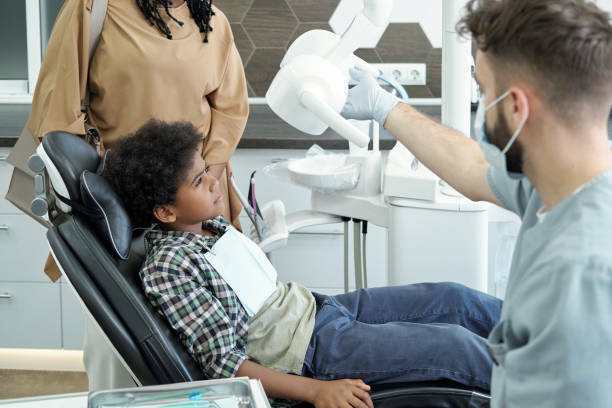If you have recently welcomed a new baby or adopted a child, your next step should be to obtain health insurance for them. Fortunately, the birth or adoption of a baby is considered a qualifying life event that makes you eligible for the Special Enrollment Period. So if you miss the annual enrollment deadline, you can purchase Marketplace coverage for your entire family through the SEP (Special Enrollment Period). Here’s more information on how to get health insurance after having or adopting a child.
How does a child’s birth or adoption result in a Qualifying Life Event?
Any changes in your household will qualify as a life event, and welcoming a new baby to your family is one such kind of change. This QLE will trigger the SEP that allows you to enroll in your individual ACA-compliant Obamacare plan through the Marketplace. Furthermore, a SEP establishes a 60-day window to submit your application and get coverage through the Marketplace. Read this article to see the complete list of qualifying life events (or QLEs.)
What happens during the Special Enrollment Period
There are some exceptions to the rule that you can only register for Marketplace insurance once a year during the Open Enrollment Period. You might be able to enlist in a health insurance plan during a Special Enrollment Period if you have a QLE (qualifying life event), such as birth or adoption of a child.
You may be required to verify your eligibility and submit specific documents to prove your qualifying life event. If you have adopted or given birth to a baby, you must submit the child’s adoption letter or birth certificate. After your QLE has been confirmed, you will be eligible to shop the Marketplace just as you would during the annual enrollment window. You can compare available programs and prices and see if you qualify for premium tax credits.
Remember that you will have a time of 60 days from your qualifying life event to sign up for coverage through SEP. If you haven’t enrolled in Marketplace insurance by the end of your SEP, you’ll have to wait until the next enrollment window to do so.
You can enter your postal code here to see plans and premiums in your area—you’ll only need to prove the SEP when you submit your application.
What other health insurance options do I have?
To obtain Marketplace insurance (also known as Obamacare or ACA insurance), head down to InsuranceShoping.com or call +1 855-913-1570. You also have a few other options, which are listed below.
Medicaid coverage
You may also qualify for Medicaid health insurance depending on your income status. Medicaid is a government-subsidized program that provides health insurance to low- or middle-income Americans. Your eligibility for Medicaid coverage will depend on your household earnings. Adults, children, the elderly, pregnant women, and individuals with disabilities can all obtain Medicaid coverage. You can get more information on Medicaid health insurance here.
Each region sets up and manages its own Medicaid program and determines the range of services provided as per the ACA provisions.
The state government requires all Medicaid programs to provide a set of “mandatory benefits”. These essential benefits include home health services, inpatient and outpatient care, physician services, nursing facility services, and laboratory and x-ray services. It also provides coverage for:
- Nurse-midwife services
- Family planning benefits
- Certified pediatric & family nursing services
- Freestanding maternity center services (when approved and recognized by the state), and
- Substance abuse counseling for pregnant ladies.
Eligibility for Medicaid health insurance
The ACA (Affordable care Act) authorized states to develop their Medicaid programs to include low-income adults. You will only get Medicaid insurance if your state expanded coverage for these plans or if you meet any other criteria (for instance, if you are pregnant, have a disability, or are parenting a child below the age of 19).
How to apply for Medicaid
You can submit your application for Medicaid insurance at any time of the year, even if the Open Enrollment has passed.
Through InsuranceShopping.com, you can instantly find your eligibility for Medicaid insurance based on your location, income, and whether your region has opted to expand Medicaid.
If you meet the requirements, you can begin your Medicaid application through InsuranceShopping. Once you fill out all the information, your application will be forwarded to the state’s Medicaid agency. They will review your details and send you an official determination letter within a few weeks. Nonetheless, contact your local Medicaid provider by phone or in-person if you haven’t heard back from them.
CHIP (Children Health Insurance Program)
The CHIP is a federal program that helps fund health insurance for children at the regional level. Each state operates its CHIP program that primarily serves low-income households. These families are often ineligible for Medicaid or have employer-sponsored insurance that doesn’t cover their children. CHIP eligibility varies by state, with most states covering children with family incomes of approximately 200 percent of the FPL.
You can find out if you qualify by visiting our site, InsuranceShopping.com.
Who is covered by CHIP insurance?
Although CHIP receives funds equal to those provided by the federal government, each state has its own set of operating guidelines. Nevertheless, every state’s program will provide primary coverage for uninsured children aged 19 and below, belonging to families with incomes too high to be eligible for Medicaid. As rules differ by state, the best way to determine your child’s eligibility is to contact your state agency.
What does CHIP cover?
Regardless of how each state determines eligibility, all states provide the same coverage through their CHIP programs. CHIP necessitates the following components:
- Routine check-ups
- Immunizations
- Prescription medications
- Primary care visits
- Vision and Dental Care
- Emergency services (ambulance or emergency room visits)
- Hospital facilities (in or outpatient care)
It is worth mentioning that a child’s annual primary care and dentist visits are accessible under this program.





